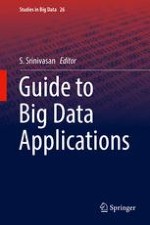2018 | OriginalPaper | Chapter
2. Start with Privacy by Design in All Big Data Applications
Authors : Ann Cavoukian, Michelle Chibba
Published in: Guide to Big Data Applications
Publisher: Springer International Publishing
Activate our intelligent search to find suitable subject content or patents.
Select sections of text to find matching patents with Artificial Intelligence. powered by
Select sections of text to find additional relevant content using AI-assisted search. powered by
